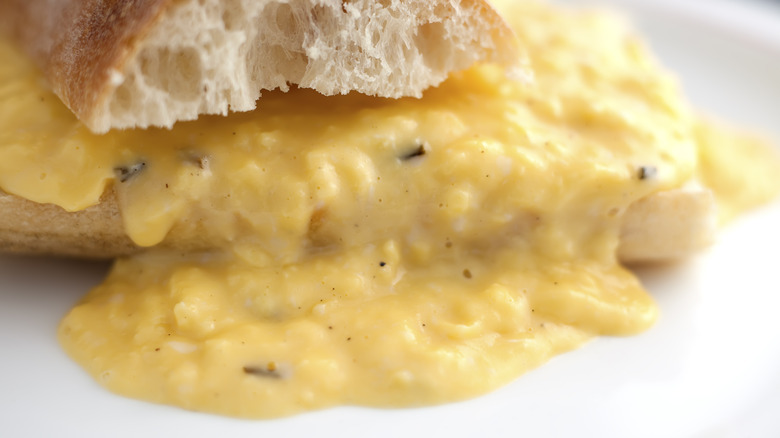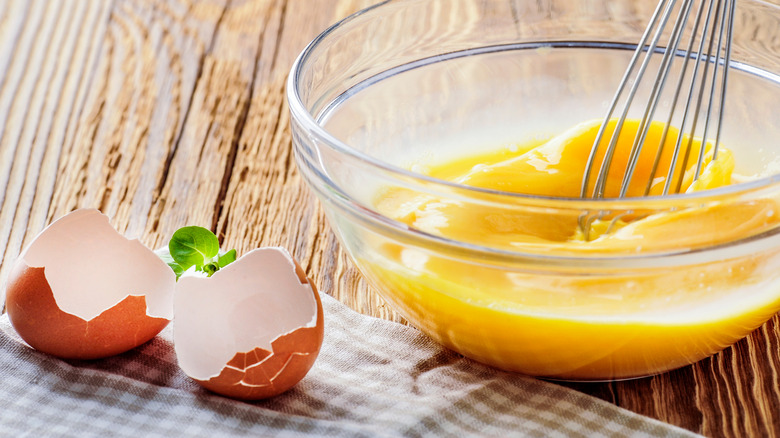The Science Behind Custardy Scrambled Eggs
Scrambled eggs are a classic breakfast and brunch staple that find their way onto almost every menu. There are countless uses for the small, but incredible, edible egg and one of the most common is scrambled eggs.
One way to prepare eggs is in the classic French style. This style differs from what most folks encounter at diners and Greasy Spoons across the U.S. due to its consistency. Its rich, custardy, almost soup-like texture makes it the perfect scrambled egg for coating or dipping toast, and its decadent flavor turns a casual breakfast into a luxuriant affair.
Before we indulge in this method though, let's learn about why most eggs turn out as fluffy, yellow pillows. According to Food Crumbles, eggs are great at trapping air inside of them as they are whisked. This is because egg whites are 10% protein, which is a compound that loves to bond with other molecules once it's been denatured (whisked). The ensuing result is an abundance of air trapped as bubbles inside a structured web of proteins. This is the same reason why it's important to crack your eggs in a bowl first and give them a serious whisking. Serious Eats points out that the temperature at which eggs are cooked over will influence the results as well. Medium-high heats tend to promote more bubbles forming within the curds, and will produce a fluffier scrambled egg when all is said and done.
Low heat and heavy whisking are the key
So, what's the secret to perfect custardy scrambled eggs; that's right, a whisk. That's right, the whisk giveth bubbles and the whisk taketh bubbles away. The main differences between these two approaches are the application of heat, and when you whisk.
As Jamie Oliver points out when making American, 'diner-style eggs with a long curd, and fluffy texture, they need to be whisked first, and then gently handled while in the pan over medium heat. Custardy eggs, on the other hand, should be whisked thoroughly throughout the cooking process over a low flame.
Serious Eats says that cooking the eggs at a low temperature while whisking them frequently will keep the eggs from puffing up. The low heat prevents gasses and water vapor from expanding during cooking. This creates less mass to fill the space between strands of proteins. Those proteins also have a harder time forming because of the constant whisking. Instead of being whisked once, then left to set over the heat, custardy eggs are whisked throughout which continues breaking down the proteins as they cook. They form the same bonds, but the whisk is too quick to break them down. So, even if water vapor does form there's no structure to trap it inside. Cook's Illustrated says that this creates a scrambled egg with smaller curds floating in a cooked sauce of eggs that will be a one-ingredient showstopper of rich flavor.

